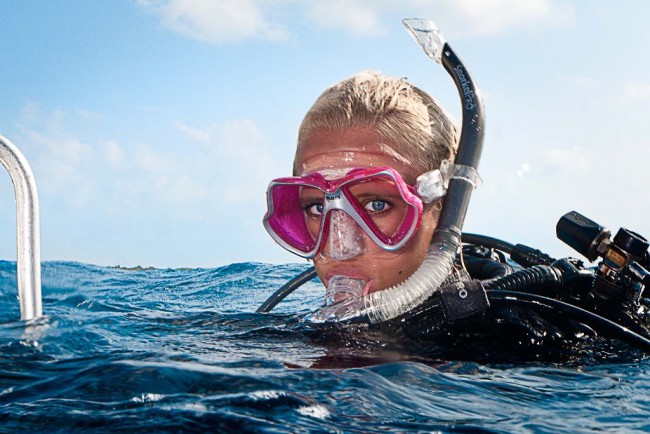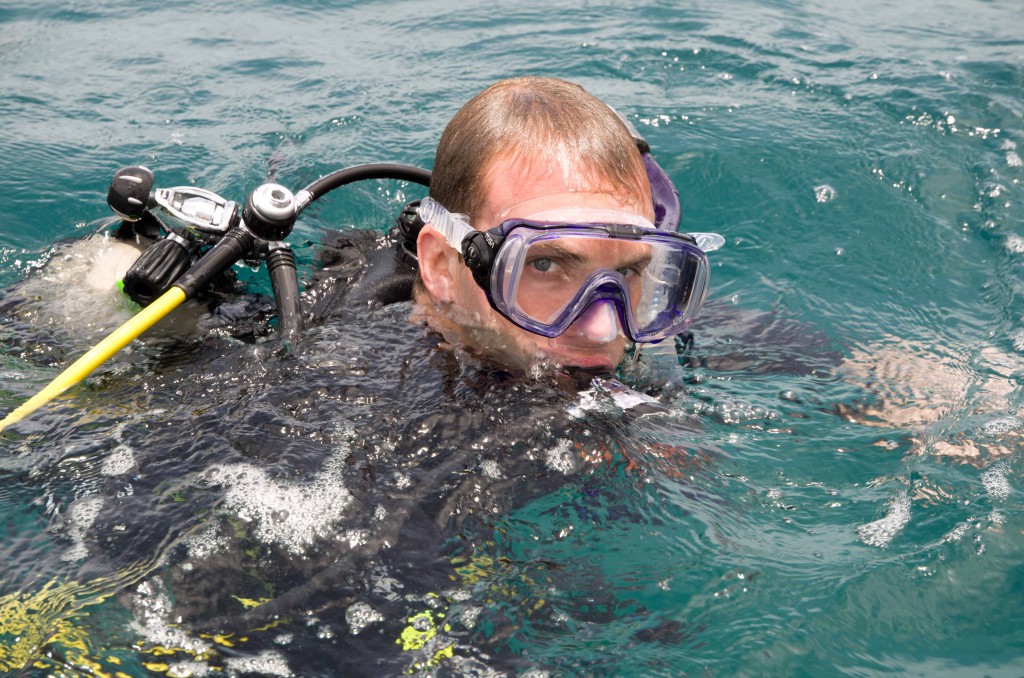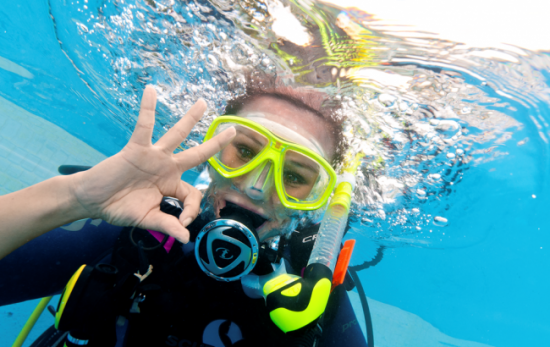featured from DAN (Divers Alert Network)
Seasickness or Motion Sickness
Seasickness is a condition individuals may experience when on a moving platform. It involves a general feeling of illness, dizziness, nausea and vomiting. It is also called motion sickness. Passive motions disturb fluid movement within the labyrinth and affects one’s sense of balance and equilibrium. It is exaggerated when the brain receives conflicting messages delivered from the eyes, muscles and joint sensors (proprioceptors). In a closed room, the view indicates that the surroundings are still, while the signals from the labyrinth indicate that the body is moving. Motion sickness can occur when traveling on a ship, plane, train, bus or car. Some people are more sensitive than others, but if the motion stimuli are strong and the exposure lasts long enough, nearly all individuals will experience it.

Symptoms
The symptoms of motion sickness include dizziness, sweating, nausea, vomiting and a general feeling of discomfort or illness. Symptoms can strike suddenly and progress from simply not feeling well to cold sweats, dizziness and vomiting. Motion sickness is more common in women and in children 2-12 years old. Individuals who suffer from migraine headaches are also more prone to motion sickness. Motion sickness lasts as long as the motion lasts. Once the motion stops, symptoms quickly subside. Some people feel “sea legs” after a long sojourn at sea.

Prevention and Management
If you know you have motion sickness or might be prone to it, consider this advice:
- On a boat: Stay on deck and focus on the horizon. Avoid inhaling exhaust fumes.
- In a car: Sit in the front seat. If you are the passenger, look at the scenery in the distance.
- Do not read in moving vehicles. Reading makes motion sickness worse.
- Avoid heavy meals prior to diving.
- Drink plenty of water.
- Avoid alcohol the evening before you travel.
- If possible, stand up. Sitting or lying down can make you feel worse.
- Eat dry crackers to help settle a queasy stomach.
- Avoid others who have become nauseous with motion sickness.
Treatment
Motion sickness can be treated with over-the-counter and prescription drug products.
- Over-the-counter products: Antihistamines are commonly used both to prevent and treat motion sickness. A side effect of antihistamines is drowsiness, which is exaggerated when alcohol is consumed. Drowsiness may adversely affect diver safety.
- Prescription products: The scopolamine skin patch (Transderm Scop) is a popular option. The patch is applied to the skin area behind the ear at least eight hours before exposure and can help prevent motion sickness for up to three days per patch. Scopolamine may cause dry mouth, blurry vision, drowsiness and dizziness. Patients with glaucoma, enlarged prostate and some other health problems should not use this drug. Be sure to tell your doctor of your existing health problems to help determine which drug is best suited for you.
- Alternative remedies: Various alternative remedies have been promoted as being helpful in relieving or preventing motion sickness. In most cases, the evidence of efficacy is missing. However, if you have mild symptoms, you may try ginger or peppermint products to ease your symptoms without risking side effects.
To learn more tips, visit the DAN Health & Diving library at DAN.org/Health.





